Global Wine Production Plunges to Near 60-Year Low
Extreme Weather Conditions Drive Historic Low in Wine Production
2024-12-13
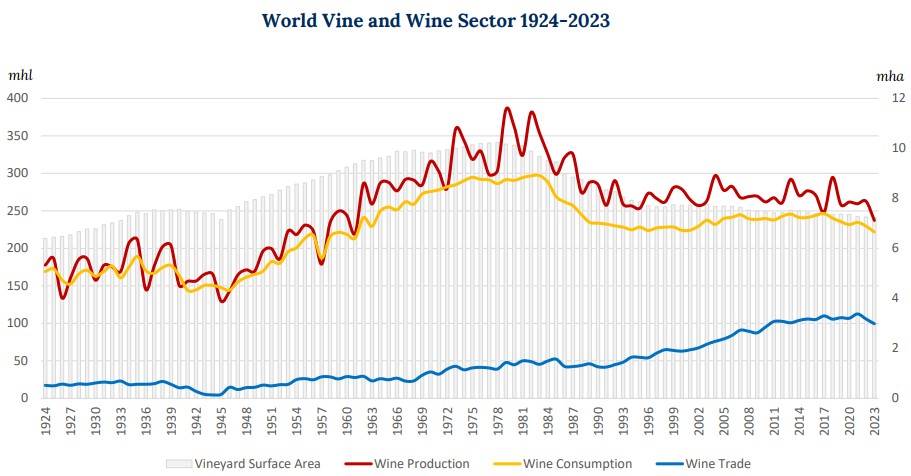
The International Organisation of Vine and Wine (OIV) released its preliminary estimates for global wine production in 2024 on November 29. The report, based on data from 29 countries accounting for 85% of global production, highlights a continued decline in production levels due to extreme weather conditions impacting both traditional and emerging wine regions. This situation underscores the urgent need for adaptive measures in the industry.
The global vineyard area remains generally stable but shows signs of contraction in key regions. Europe, which leads in vineyard acreage, faces significant challenges related to climate change. Water stress and rising temperatures have reduced productivity in areas such as Spain and southern France. Conversely, Asia and South America have expanded their vineyard areas through modernized agricultural techniques and the adoption of new technologies.
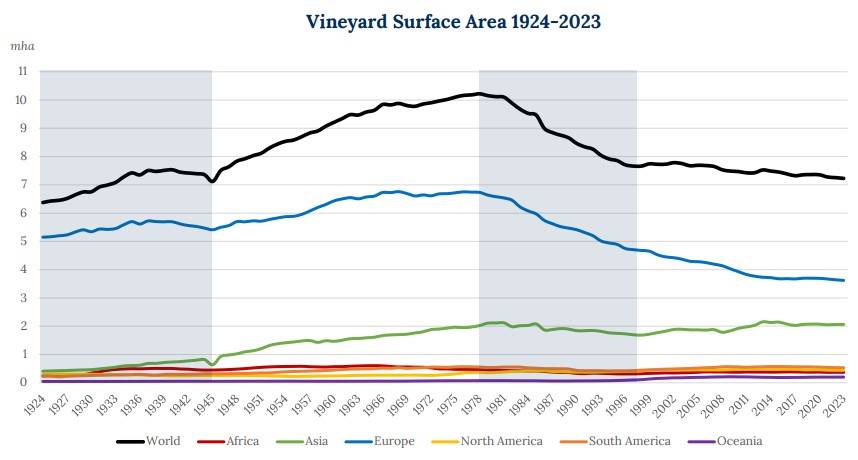
Global wine production in 2024 is estimated at between 227 and 235 million hectoliters, with a central estimate of 231 million hectoliters. This figure represents a 2% decrease compared to 2023 and a 13% drop from the average of the last decade. The decline makes 2024 one of the years with the lowest production since 1961, primarily attributed to adverse weather events such as heavy rains, prolonged droughts, and early frosts that have affected leading producer countries.
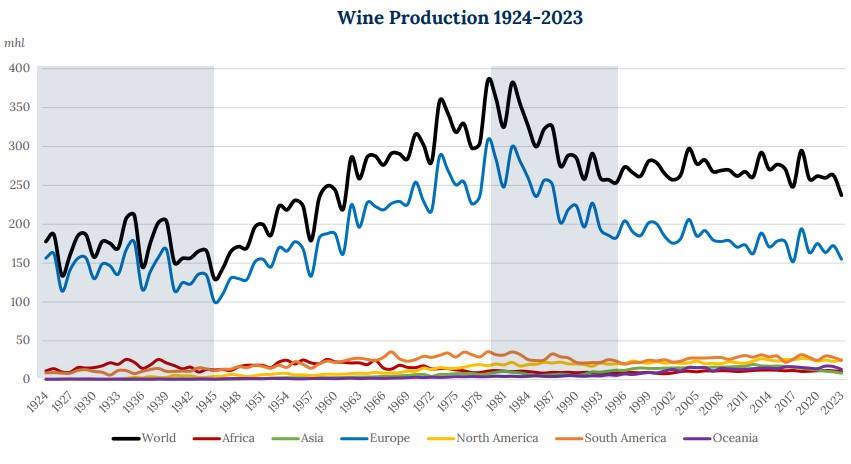
In the Northern Hemisphere, the European Union, which accounts for 60% of global production, faced a challenging year. Its estimated production of 139 million hectoliters in 2024 marks a 3% decrease from the previous year and an 11% drop compared to the five-year average. Italy reclaimed its position as the world's largest producer with 41 million hectoliters, a 7% increase from 2023, though still 13% below its historical average. France experienced a 23% decline, while Spain increased its production by 18%, reaching 33.6 million hectoliters.
Beyond these major European producers, countries like Hungary and Greece achieved positive results in 2024. Hungary's production reached 3 million hectoliters, a 22% increase from the previous year and its highest since 2010. However, nations such as Germany and Portugal experienced declines of 6% and 8%, respectively, with Germany's losses driven by spring frosts and heavy summer rains.
In the Southern Hemisphere, total production is estimated at 46 million hectoliters, representing a 2% decrease from 2023 and 12% below the five-year average. This positions 2024 as the lowest production year in the region in two decades. Argentina led with 10.9 million hectoliters, a 23% increase from 2023 but still 4% below its five-year average. In contrast, Chile and Brazil saw drops of 15% and 25%, respectively, due to droughts and excessive rainfall. In New Zealand, frost during flowering severely impacted yields.
Global wine consumption is undergoing significant changes driven by economic, demographic, and cultural factors. While Europe remains the largest market, consumption is trending downward, particularly in countries like France and Italy, where per capita consumption has declined over decades. Meanwhile, North America and Asia have reported growth, driven by an expanding middle class with a preference for premium products and increased market diversification.
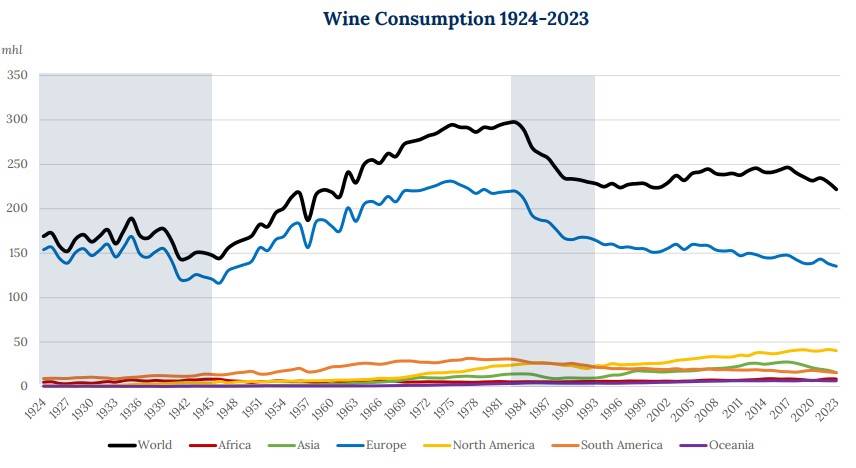
International wine trade remains a critical stabilizing factor for the sector. Since the 1970s, exports have grown steadily, with a record internationalization index of 48% reached in 2021. Europe continues to lead in exports, but emerging regions such as Oceania and South America have gained prominence in key markets across Asia and North America. This growth underscores the importance of trade as a driver for producers.
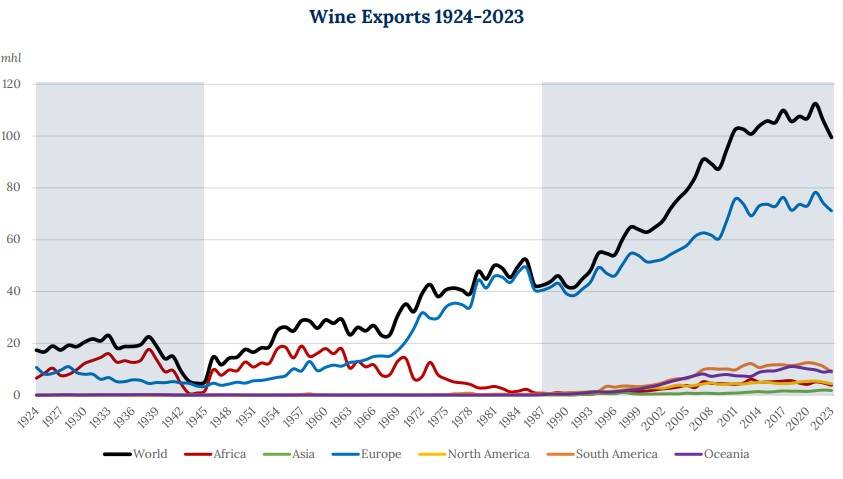
The impact of climate change on the wine industry is a central theme in the OIV report. Extreme events such as frosts, torrential rains, and prolonged droughts not only reduce production volumes but also affect the quality of wines. This has prompted producers to adopt more resilient practices, including diversifying grape varieties, improving water management, and developing advanced technologies to mitigate climate-related impacts.
Founded in 2007, Vinetur® is a registered trademark of VGSC S.L. with a long history in the wine industry.
VGSC, S.L. with VAT number B70255591 is a spanish company legally registered in the Commercial Register of the city of Santiago de Compostela, with registration number: Bulletin 181, Reference 356049 in Volume 13, Page 107, Section 6, Sheet 45028, Entry 2.
Email: [email protected]
Headquarters and offices located in Vilagarcia de Arousa, Spain.